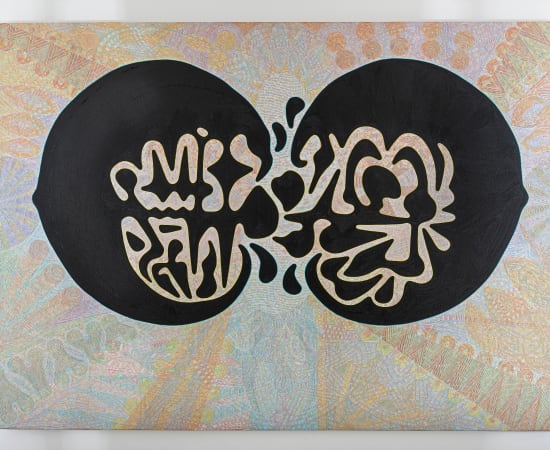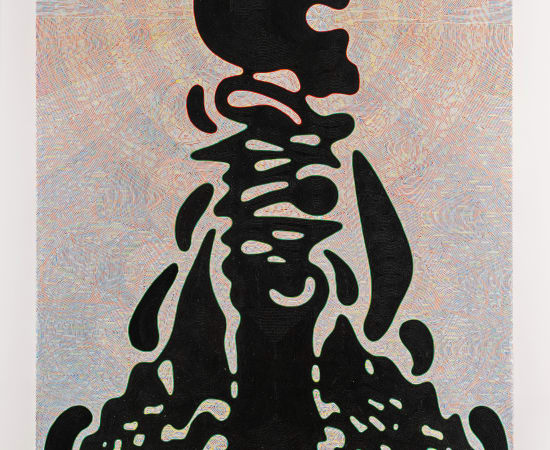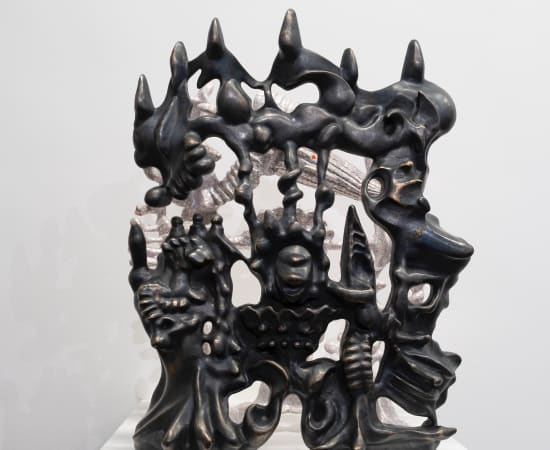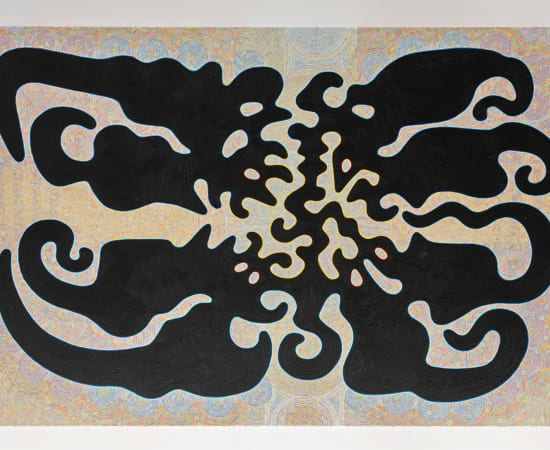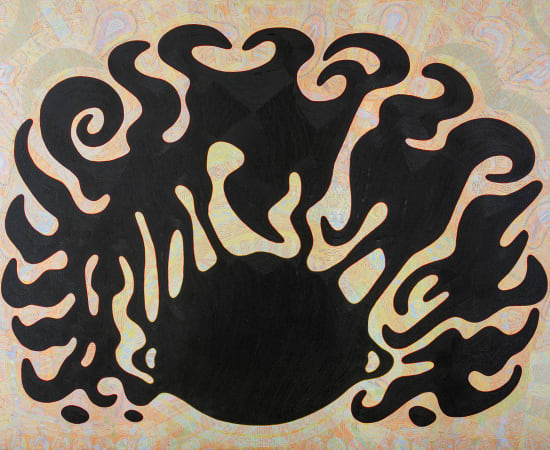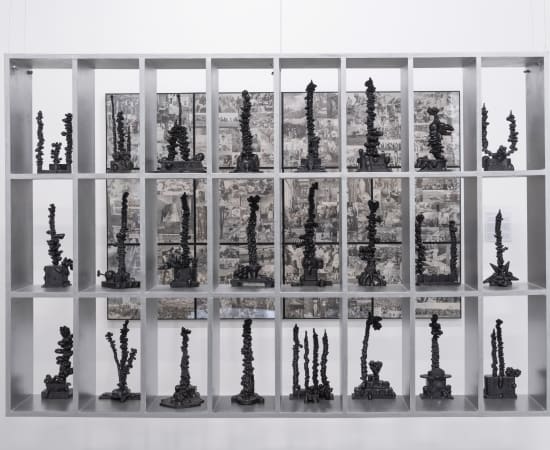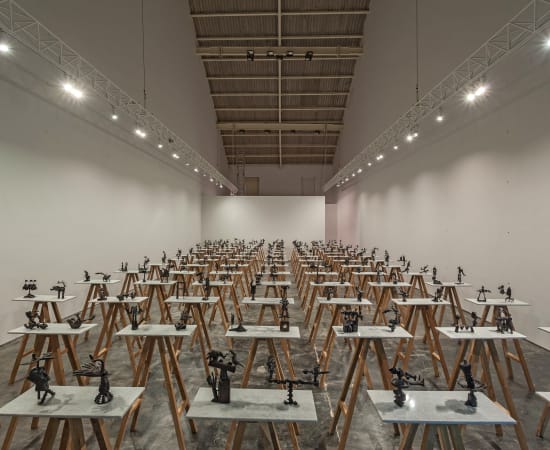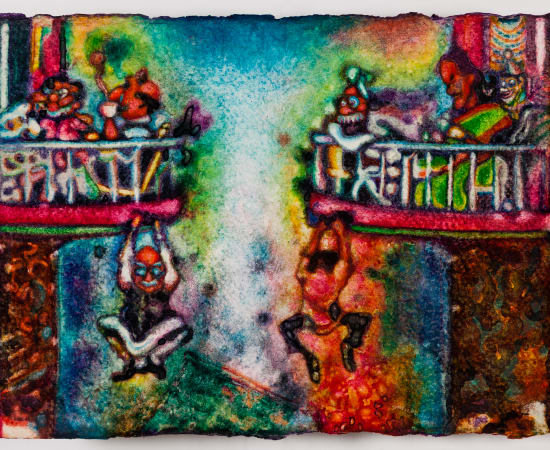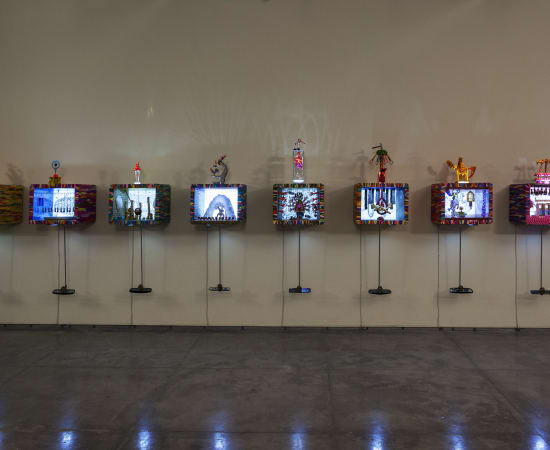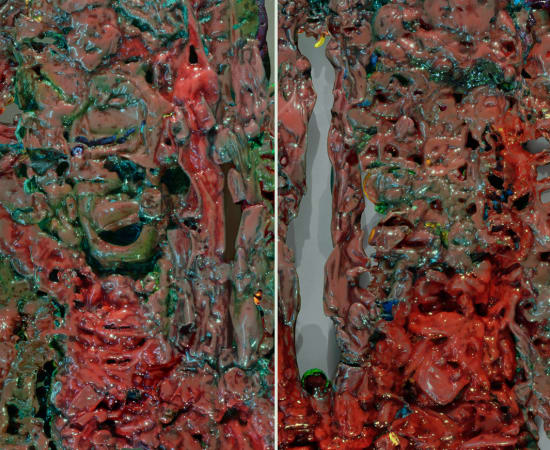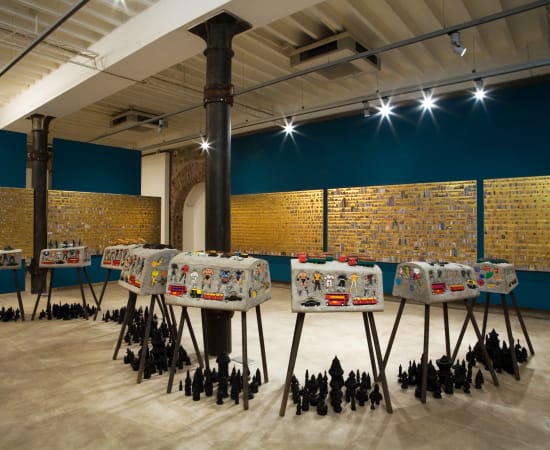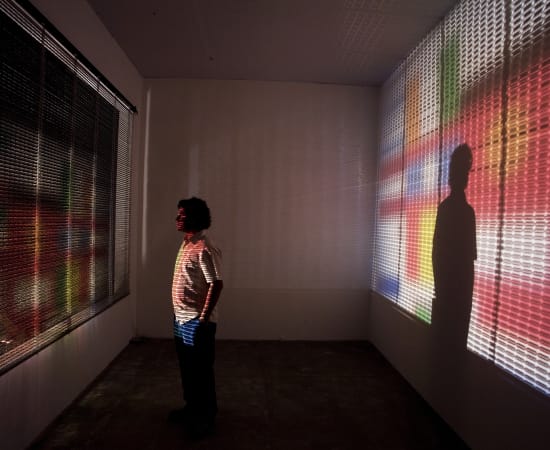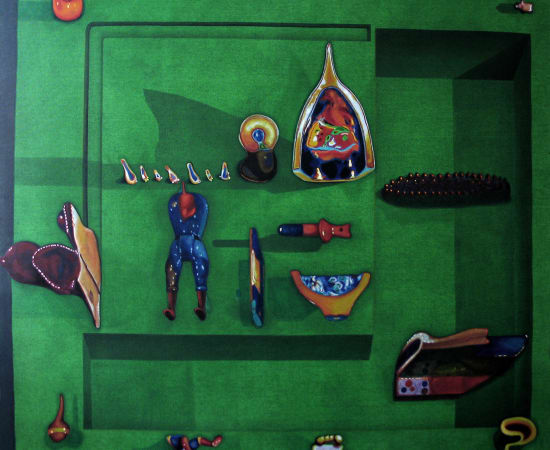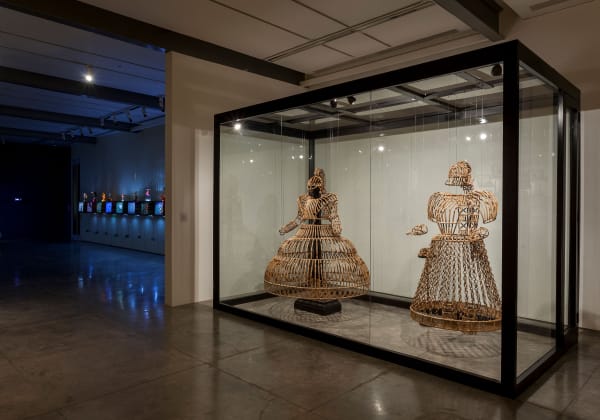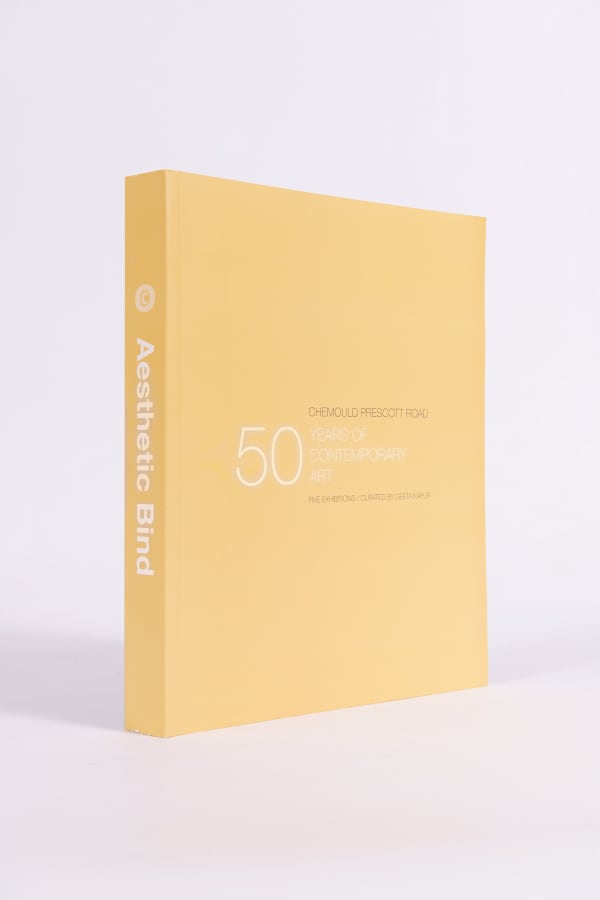Anant Joshi b. 1969
-
 Binoculars with Earphone, 2023
Binoculars with Earphone, 2023 -
 Empty Clock Case, 2023
Empty Clock Case, 2023 -
 Man Standing - with Helmet, 2023
Man Standing - with Helmet, 2023 -
 Missing - Flowers of the Wilderness, 2023
Missing - Flowers of the Wilderness, 2023 -
 Moustache Men, 2023
Moustache Men, 2023 -
 Raised Eyebrow, 2023
Raised Eyebrow, 2023 -
 Untitled, 2019
Untitled, 2019 -
 Trembling Hands (of the clock), 2015
Trembling Hands (of the clock), 2015 -
 Masquerade and other Apologue, 2014
Masquerade and other Apologue, 2014 -
 Happy New Year, 2013
Happy New Year, 2013 -
 Untitled, 2012
Untitled, 2012 -
 Untitled, 2012
Untitled, 2012 -
 Untitled, 2009
Untitled, 2009 -
 May look closer than they appear, 2008
May look closer than they appear, 2008 -
 Navel one and the many, 2007
Navel one and the many, 2007 -
 Chocolate box, 2005
Chocolate box, 2005
b. 1969, in Nagpur, India
Anant Joshi, a Mumbai-based artist, critiques our culture of abundance through sculptures, paintings, and light boxes. His work is notable for its distinctive use of toys as an artistic medium. Although toys were absent from Joshi's own childhood, he now engages with them as an adult to explore how these seemingly trivial objects convey messages about power, perception, and reality. He views toys as potent instruments that enable children to shape their ideal world, serving as a form of cultural programming for future generations.
After earning his B.F.A. and M.F.A. in painting at Sir J.J. School of Art in 1996, Joshi received notable awards and residencies. In 1998, he undertook a residency at the Kanoria Centre for Arts in Ahmedabad. The following year, he was awarded the Bendre Hussain Scholarship by the Bombay Art Society and presented a solo exhibition entitled Mukhota Paintings at Chemould.
Between 2002 and 2003, Joshi held another residency at Rijksakademie van Beeldende Kunsten in Amsterdam, where he was awarded the prestigious Dutch Prix de Rome 2004. During this programme, Joshi first discovered toys as a medium. On the Queen’s birthday, Dutch children sell their old toys for pocket change. Joshi purchased these toys, dismantled them to remove their 'fixed identities,' and recontextualised them to reflect his own experience of cultural adjustment as an Indian in Holland. While his early works repurposed readymade toys, Joshi now creates his own “toys,” typically using painted ceramic and fiberglass. Like the toys they are inspired by, Joshi’s sculptures and installations, with their gleaming, shiny colours and finishes, draw the viewer in. However, upon closer inspection, grotesque details like severed heads and trunk-less limbs emerge, evoking an aura of violent chaos.
By 2007, Joshi undertook another solo show at Chemould Prescott Road entitled NAVEL: One and the Many. The title referenced the god Brahma, who emerged from a lotus growing out of Vishnu’s navel. In this exhibition, Joshi transformed toys into violent installations, reminding viewers that while they may feel detached from global violence, they actively contribute to it through their parenting. Just as Vishnu contained all elements of creation within his body, Joshi’s work suggests we hold the power to shape our societies through how we raise our children.
Joshi is also renowned for his dramatic kinetic room installations, which amplify the impact of his mutated toy sculptures using lights, shadows, and reflections. In the 2007 exhibition NAVAL: One and the Many, he skewered fragments of brightly painted animal, human, and superhero figures onto rotating steel rods. This installation pierced both the viewer’s childhood memories and their sense of societal order. Joshi heightened this horror by separating viewers from the toys with blinds made of sharp razor blades, enticing them with movement and light while rendering them powerless to intervene.
In 2012, Joshi created some of his most celebrated works for the traveling exhibition Cinema City, co-curated by Archana Hande and Madhushree Dutta. Inspired by matinee idols, often called ‘patakas’ (firecrackers), and spindles - central to the textile industry’s history - Joshi crafted a mesmerising spinning installation with 100 objects rotating on an 8 x 4 foot table. This installation captured the sense of desire and excitement that pulses at the heart of Bombay.
Joshi demonstrated his ability to harness the energy of a city once again at the Kochi Muziris Biennale in 2012 with his installation Three Simple Steps. He replicated the form of a traditional Kerala temple, replacing the temple’s walls adorned with lamps with electronic mosquito repellent devices filled with the perfume ittar. This overwhelming sensory experience was designed to attract like-minded, good-hearted individuals, reminiscent of Malayalis seeking fortune abroad, while repelling those with malevolent intentions. Like many of Joshi's works, Three Simple Steps drew deep inspiration from Hindu mythology and Indian festival culture, particularly the Kerala festival of Onam.
In 2015, Joshi presented a solo show entitled Masquerade and other Apologues, which delved into the history and evolution of political cartoons. The show offered a nuanced critique of contemporary media and political dynamics. One featured work, Weathervane, used melted plastic toys to symbolise the shifting design and biases of broadsheet newspapers, reflecting a move towards right-wing media influences.
Having participated in Modus Operandi and Part 1: Framing | CheMoulding: Framing Future Archives, Joshi held a major solo show entitled Raised Eyebrow in 2024. Inspired by daily news and ironic stories, the exhibition featured artworks reflecting on the absurdities and complexities of modern life. Highlights included Missing – Flowers of the Wilderness, a bronze and fiberglass sculpture referencing Mahatma Gandhi’s lost Three Monkeys, commenting on the replication and loss of original values. The show also featured nine large paintings where Joshi obscured newspaper images with abstract patterns, addressing themes of censorship and the erasure of information in contemporary society.
The artist lives and works in Baroda, India.
-

Raised Eyebrow | Bikaner House
Anant Joshi 22 - 28 Nov 2024Viewing room After many years we return to Delhi with a solo exhibition of our artist Anant Joshi . ‘Raised Eyebrow’ brings together his works - sculptures, paintings and light...Read more -

Raised Eyebrow
Anant Joshi 11 Jan - 14 Feb 2024Sculpture Anant Joshi is a newspaper devourer. With the information surfeit one gets today through all the various sources, the daily news from hard copy papers is the primary “feeder”...Read more -

Part 1: Framing | CheMoulding: Framing Future Archives
Curated by Shaleen Wadhwana | 60 Years of Gallery Chemould 15 Sep - 22 Oct 2023Anant Joshi, Archana Hande, Atul Dodiya, Bhuvanesh Gowda, Desmond Lazaro, Dhruvi Acharya, Gigi Scaria, Jitish Kallat, Madhvi Subrahmanian, Meera Devidayal, Mithu Sen, NS Harsha, Ram Rahman, Ritesh Meshram, Shakuntala Kulkarni,...Read more -

Interference
Anant Joshi | In-Touch Edition VII 1 Feb - 30 Apr 2022Anant Joshi invents a circus of the past: forms that populate his work act out stories of political upheaval and social turmoil in the country. He plunges us into this...Read more -

Out-site / Insight
Group Show | In touch Edition I 24 Apr - 23 Jul 2020We approached our artists inquiring how they were doing in this time of isolation. Several of them are unable to make art - using their time to read, watch films,...Read more -

Modus Operandi
Group Show 13 Jul - 18 Aug 2018This July, Chemould Prescott Road presents Modus Operandi , a show that has been devised by Shireen Gandhy and the Chemould team, brin ging together a large number of Chemould...Read more -

Masquerade and Other Apologues
Anant Joshi 15 Jan - 14 Feb 2015A weathervane that hangs blow-torched plastic toys that enact the divisions of the headlines of a broadsheet, surely critiques an aesthetic. Anant Joshi is an artist who keenly archives the...Read more -

Aesthetic Bind: Cabinet Closet Wunderkammer
50 Years of Chemould | Group Show 20 Jan - 3 Mar 2014There are small exhibitions within this exhibition compacted by a set of framing devices. The Closet holds intimate things: clothes, mementos, secrets about self and identity, fears or even crimes....Read more -

Navel: One and Many
Anant Joshi 13 Mar - 14 Apr 2007Anant Joshi has often arrived at his drawings and paintings from forms and spaces that he sculpts or constructs. He uses carefully selected toys that he breaks apart, paints over...Read more
-
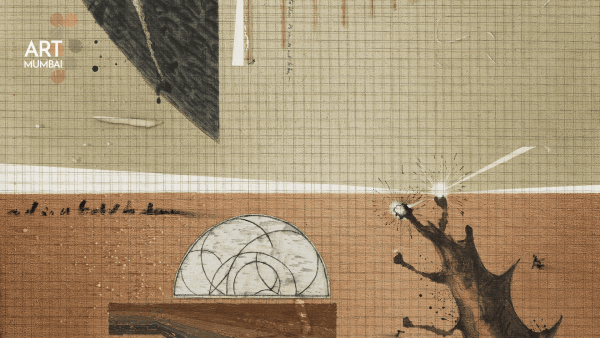
Art Mumbai 2024
Mumbai 14 - 17 Nov 2024Booth 28 Public days: NOV 16 - 17, 2024 We look forward to welcoming you once again in person to our booth at Art Mumbai...Read more -

India Art Fair 2024
New Delhi 1 - 4 Feb 2024Booth B2 Public days: Feb 1 - 4, 2024 We look forward to welcoming you once again in person to our booth at India Art...Read more -

India Art Fair 2023
New Delhi 9 - 12 Feb 2023Booth B2 Public days: Feb 9 - 12, 2023 We look forward to welcoming you once again in person to our booth at India Art...Read more -

India Art Fair 2020
New Delhi 30 Jan - 2 Feb 2020Public days: Jan 30 - Feb 2, 2020 Chemould Prescott Road presents a suite of works this year at India Art Fair 2020 that reflect...Read more -

India Art Fair 2019
New Delhi 31 Jan - 3 Feb 2019Public days: Jan 31 - Feb 3, 2019 Chemould Prescott Road presents a suite of works this year at India Art Fair 2019 that reflect...Read more -
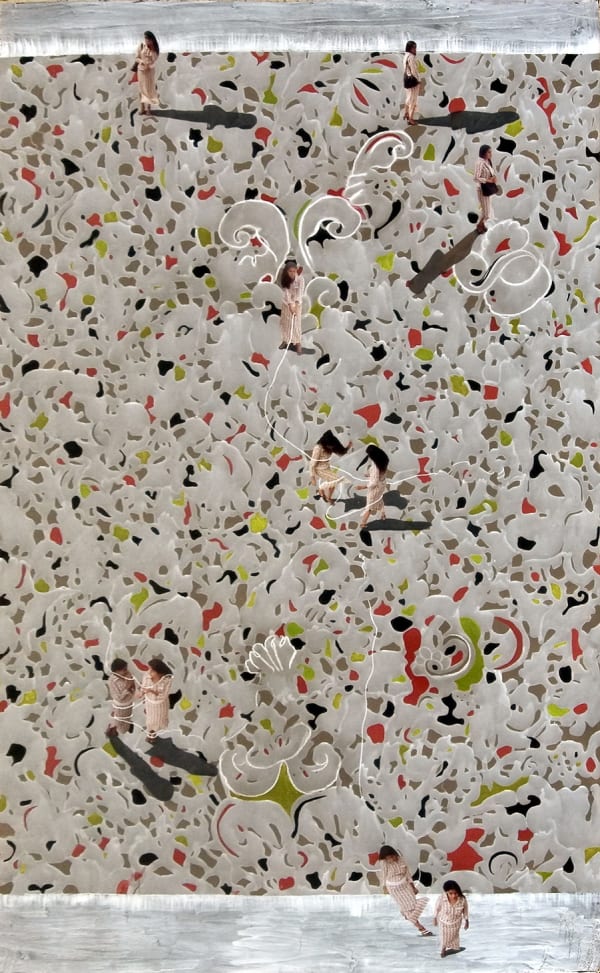
DIFC Gulf Art Fair 2007
Dubai, UAE 7 - 10 Mar 2007Public days: March 7 - 10, 2007 Chemould Prescott Road is delighted to present the works of seven artists, Tushar Joag, Anant Joshi, Jitish Kallat,...Read more
















